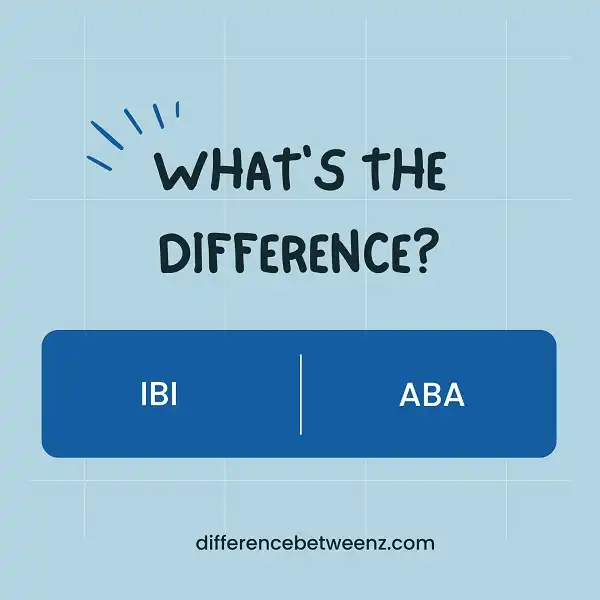There is a lot of confusion surrounding the term “ABA therapy”. Some people refer to any form of applied behavior analysis (ABA) as ABA therapy, while others reserve the term for a specific type of ABA intervention. So, what is the difference between ABA and IBI? And which one is right for your child? This post will explore the differences between ABA and IBI, and help you decide which option is best for your family.
What is ABA?
ABA stands for Applied Behavior Analysis. ABA is a scientific approach to understanding behavior and how it can be changed. ABA includes a range of techniques, including positive reinforcement, observing and measuring behavior, and developing goals and plans to change behavior. ABA has been shown to be effective in treating a wide range of conditions, including autism spectrum disorder, attention deficit hyperactivity disorder, and anxiety disorders. ABA is also used in many other settings, such as education and businesses, to help people learn new skills or change their behavior. ABA is a growing field, and there are many opportunities for those interested in pursuing a career in ABA.
What is IBI?
IBI is an acronym for Intensive Behavioural Intervention. IBI is a form of Applied Behaviour Analysis (ABA). IBI is used to treat children and adolescents with autism spectrum disorder (ASD). IBI aims to improve social, communication, and life skills. IBI is intensive, meaning it is delivered in a one-to-one setting for a minimum of 25 hours per week. IBI is also individualized, meaning it is tailored to the unique needs of each child. IBI has been shown to be effective in reducing ASD symptoms and improving the quality of life for children and families. If you are considering IBI for your child, please speak to a qualified professional to learn more about this treatment option.
Difference between ABA and IBI
ABA (Applied Behavior Analysis) and IBI (Intensive Behavioral Intervention) are both evidence-based therapies that aim to improve the quality of life for individuals with an autism spectrum disorder. ABA therapy focuses on the reduction of challenging behaviors and the development of new skills, while IBI therapy focuses on intensive one-on-one instruction to promote language and social skills development. ABA and IBI share many common features, including a focus on individualized treatment plans, frequent progress monitoring, and a team-based approach. However, there are also some key differences between the two therapies. ABA therapy often uses a rewards-based system to motivate individuals to learn new skills, while IBI therapy takes a more naturalistic approach, using everyday activities to teach new skills. ABA therapy is also delivered in shorter sessions spread out over a longer period of time, while IBI sessions are typically longer and more intensive. Ultimately, ABA and IBI are both effective evidence-based therapies for Autism Spectrum Disorder, and the best approach for an individual will depend on their needs and preferences.
Conclusion
The debate between ABA and IBI is a passionate one, with strong advocates on both sides. However, it’s important to remember that the science of autism treatment is still in its early stages and there is still much we don’t know about how best to help those affected by autism spectrum disorder. What works for one child may not work for another, so it’s important to be open to trying different approaches until you find what helps your child reach their fullest potential.


